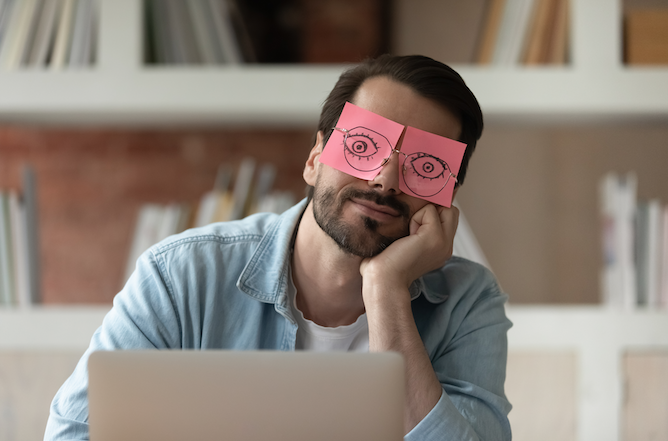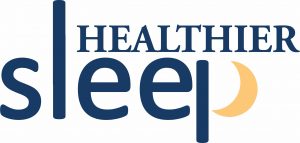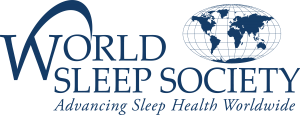Most of us have had an occasional morning when we wake up thinking, “Just five more minutes. Please just let me sleep five more minutes.” We likely nonetheless drag ourselves out of bed and face the day in a groggy state. Perhaps we had stayed up binging on the latest Netflix series or maybe we have an infant or older parent who isn’t sleeping through the night. We may have struggled through the day in a fog not really thinking clearly, had trouble paying attention or making decisions, and been just a wee bit irritable. We may have dozed off during an important meeting or while watching a movie. Now imagine feeling this way every day almost all day for months or years on end—This symptom is what is commonly referred to as “Excessive daytime sleepiness” and is a symptom of an underlying problem as we discuss later. Without medication to wake up or stay awake, most people with EDS are certainly not operating at optimal efficiency.
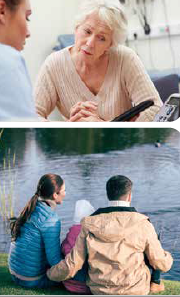 The Epidemiology of EDS
The Epidemiology of EDS
EDS is pervasive. Researchers estimate the rates of EDS to be between 10% and 20% in children, 16% to 40% in adolescents, and between 16% and 33% in adults in the United States. A recently conducted research study in Switzerland identified factors related to sleepiness among more than 2,700 participants who filled out questionnaires and underwent a complete physical exam when the study began (at baseline) and five years later. Researchers performed overnight sleep testing (polysomnography) on 1,400 of the participants at baseline and again five years later. The researchers found that 11.3% of these adults had EDS at baseline, with 16% having severe sleepiness. Over the five-year study period, 5.1% of those who were not sleepy at baseline developed EDS. Risk factors that increased the likelihood of developing EDS included male sex and having depressive symptoms, moderate to severe obstructive sleep apnea (OSA), and poor sleep quality.
The Cause of EDS
EDS has many causes. Insufficient sleep is the primary cause of EDS in our 24/7 society because we often don’t prioritize sleep, even though it is one of the pillars of health, just like exercise, diet, and mental well-being. EDS might also be related to the use of an over-the-counter, prescribed medication, or recreational drug, therefore EDS might be secondary to a medical or psychiatric condition. EDS is common in several neurologic conditions and brain injuries, as well as in depression. EDS is also one of the primary features of several sleep disorders, including obstructive sleep apnea (OSA), the central disorders of hypersomnolence—narcolepsy types 1 and 2, idiopathic hypersomnia (IH), and Kleine-Levin syndrome—and circadian rhythm disorders.
The Wide-ranging Effects of EDS
The consequences of EDS are widespread, not only for the affected individual, but also society. People with EDS are more likely to be involved in a motor vehicle crash or workplace accident, use more healthcare resources, have decreased productivity at home and work, have more challenges in interpersonal relationships, and have a lower quality of life in general.
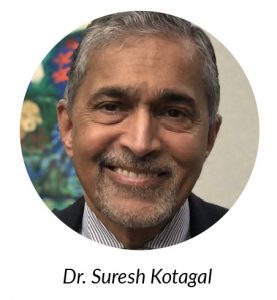 Adults and children with EDS are more likely to have anxiety and depression. According to Suresh Kotagal, MD, Emeritus Professor of Neurology, Mayo Clinic Alix School of Medicine, “Something as innocuous as a birthday party can be one of the most challenging situations for a school-aged child with narcolepsy. They might be having fun and laughing with their friends and have an episode of cataplexy, which is a brief sudden episode of muscle weakness in response to an emotional trigger, such as laughter. The episode may lead to a head roll, the jaw-dropping open, or even the person falling to the floor. This can be embarrassing, leading to anxiety about social situations and withdrawal.”
Adults and children with EDS are more likely to have anxiety and depression. According to Suresh Kotagal, MD, Emeritus Professor of Neurology, Mayo Clinic Alix School of Medicine, “Something as innocuous as a birthday party can be one of the most challenging situations for a school-aged child with narcolepsy. They might be having fun and laughing with their friends and have an episode of cataplexy, which is a brief sudden episode of muscle weakness in response to an emotional trigger, such as laughter. The episode may lead to a head roll, the jaw-dropping open, or even the person falling to the floor. This can be embarrassing, leading to anxiety about social situations and withdrawal.”
Idiopathic hypersomnia (IH) is another sleep disorder that causes excessive daytime sleepiness. People with IH are likely to have anxiety around the issue of sleep. This is not surprising given that waking to an alarm is challenging to say the least. People with IH might miss holidays and significant events in their life, not because these aren’t important, but because they slept through the five alarms they set, even the one that shakes their bed like an earthquake. Imagine going to bed at night and hoping that, when you wake up, the 7:00 on the clock will be AM and not PM.
The Evaluation of EDS
Getting to the root cause of EDS requires further evaluation, which includes a visit to your primary care or sleep specialist to talk about bedtimes and wake times, and whether these times are different on school or workdays and on days off. Factors that limit sleep or circadian rhythm disorders should be excluded before an attempt is made to diagnose other causes of EDS.
Taking a thorough sleep history can elucidate symptoms that the person may not recognize as being part of a sleep disorder, such as snoring, choking, or pausing breathing during sleep. These symptoms might indicate sleep apnea or symptoms of cataplexy, which is indicative of narcolepsy. Including bed partners or parents in these discussions may be helpful.
Reviewing medications might reveal something as simple as the use of a bedtime over-the-counter sleep aid that leads to next-day grogginess because of the drug’s long half-life; or alcohol use, which has a negative impact on sleep; or even commonly prescribed medications for seizures, heart conditions, or antidepressants.
When a person reports to their specialist that they are tired or sleepy, the specialist must first distinguish sleepiness from fatigue. Next, they must determine the person’s level of sleepiness. This is most often accomplished by having the person complete one or more questionnaires, the most widely used being the Epworth Sleepiness Scale or ESS, a 24-point scale, with a higher score indicating greater sleepiness. The ESS asks a person to rate their likelihood of falling asleep in eight different situations, such as watching TV, having a conversation, or sitting in traffic. However, the ESS captures only one aspect of EDS, and therefore patients often complete other questionnaires as well. In children, the ESS for Children and Adolescents, or ESS-CHADS, is the most commonly used scale.
The evaluation of EDS continues with a physical examination. Dr. Kotagal, points out that one of the red flags for a diagnosis of narcolepsy in children, in addition to the EDS, is recent weight gain and precocious puberty (that is, the early onset of secondary sexual characteristics, such a breast development or facial hair).
The next step in the evaluation, if necessary, includes obtaining objective measures of sleep, which could include polysomnography, the Multiple Sleep Latency Test (MSLT), and actigraphy or a sleep log (or both). If a diagnosis of narcolepsy is suspected, the specialist may order genetic testing or take a sample of cerebrospinal fluid (the fluid that bathes the brain and spinal cord) to check for levels of a neurotransmitter called hypocretin/orexin. Although the MSLT criteria for a diagnosis of narcolepsy type 1 are clear and have been well validated, the results of the test in people with narcolepsy type 2 or idiopathic hypersomnia are less likely to be accurate.
 According to Lynn Marie Trotti, MD, MPH, Associate Professor of Neurology at Emory University, the diagnosis of idiopathic hypersomnia and narcolepsy type 2 may be particularly challenging. “There are a multitude of causes of EDS, and no one test can perfectly diagnose these disorders. Thorough evaluation of a person’s symptoms, medications, medical history, sleep schedule, and diagnostic testing by a sleep specialist are very important in establishing the correct diagnosis”.
According to Lynn Marie Trotti, MD, MPH, Associate Professor of Neurology at Emory University, the diagnosis of idiopathic hypersomnia and narcolepsy type 2 may be particularly challenging. “There are a multitude of causes of EDS, and no one test can perfectly diagnose these disorders. Thorough evaluation of a person’s symptoms, medications, medical history, sleep schedule, and diagnostic testing by a sleep specialist are very important in establishing the correct diagnosis”.
The Treatment of EDS
Once the cause of EDS has been determined, treatment can begin. In the case of insufficient sleep, optimizing sleep quality and quantity are the best treatments, as is 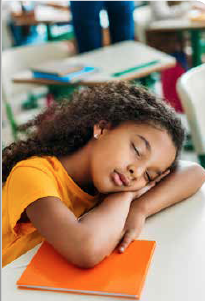 employing good sleep hygiene. If prescription medications are leading to the EDS, switching medications or the times they are taken may be helpful. It is important for people who have OSA to be continually evaluated for the presence of EDS because EDS may continue to occur in people whose OSA is well treated (for example, with positive airway pressure.)
employing good sleep hygiene. If prescription medications are leading to the EDS, switching medications or the times they are taken may be helpful. It is important for people who have OSA to be continually evaluated for the presence of EDS because EDS may continue to occur in people whose OSA is well treated (for example, with positive airway pressure.)
People with one of the central disorders of hypersomnolence or who have EDS even when they are optimally treating their OSA are likely to need both pharmacologic and nonpharmacologic therapies. According to Dr. Kotagal, “The management of pediatric narcolepsy or idiopathic hypersomnia includes drug treatment, psychiatric support, maintaining a regular sleep schedule, exercise, and managing lifestyle issues, such as going to college, driving, and living safely when away from one’s childhood home.” This is similar to the way in which EDS is treated in adults.
Conclusion
EDS is a common condition that, whether due to lack of sleep or a sleep disorder, leads to lower quality of life and a great burden on society. Recognizing EDS and either making lifestyle changes to properly address sleep needs or identifying and effectively treating an underlying sleep disorder can improve quality of life and decrease the associated societal burdens.
References:
- Berger, M., Hirotsu, C., Haba-Rubio, J., Betta, M., Bernardi, G., Siclari, F., Waeber, G., Vollenweider, P., Marques-Vidal, P., & Heinzer, R. (2021). Risk factors of excessive daytime sleepiness in a prospective population-based cohort. Journal of sleep research, 30(2), e13069. https://doi.org/10.1111/jsr.13069
- Gandhi, K. D., Mansukhani, M. P., Silber, M. H., & Kolla, B. P. (2021). Excessive Daytime Sleepiness: A Clinical Review. Mayo Clinic proceedings, 96(5), 1288–1301. https://doi.org/10.1016/j.mayocp.2020.08.033
- Lammers, G. J., Bassetti, C., Dolenc-Groselj, L., Jennum, P. J., Kallweit, U., Khatami, R., Lecendreux, M., Manconi, M., Mayer, G., Partinen, M., Plazzi, G., Reading, P. J., Santamaria, J., Sonka, K., & Dauvilliers, Y. (2020). Diagnosis of central disorders of hypersomnolence: A reappraisal by European experts. Sleep medicine reviews, 52, 101306. https://doi.org/10.1016/j.smrv.2020.101306
- Owens, J. A., Babcock, D., & Weiss, M. (2020). Evaluation and Treatment of Children and Adolescents With Excessive Daytime Sleepiness. Clinical pediatrics, 59(4-5), 340–351. https://doi.org/10.1177/0009922820903434
- Shahid, A., Winkinson, K., Marcu, S., Shapiro, C.M. (2011). STOP, THAT, and One Hundred Other Sleep Scales. Springer
- Wang, Y. G., Benmedjahed, K., Lambert, J., Evans, C. J., Hwang, S., Black, J., & Johns, M. W. (2017). Assessing narcolepsy with cataplexy in children and adolescents: development of a cataplexy diary and the ESS-CHAD. Nature and science of sleep, 9, 201–211. https://doi.org/10.2147/NSS.S140143
………………………………………………………………………………………………………………………………………………………………………………………………………………………………………………
Catherine Friederich Murray, MNLM earned her BS in biomedical communications at the University of Minnesota and her master’s in nonprofit leadership and management from Arizona State University. She has worked as a writer and editor in sleep for more than two decades and led two sleep-related patient advocacy organizations during that time.

